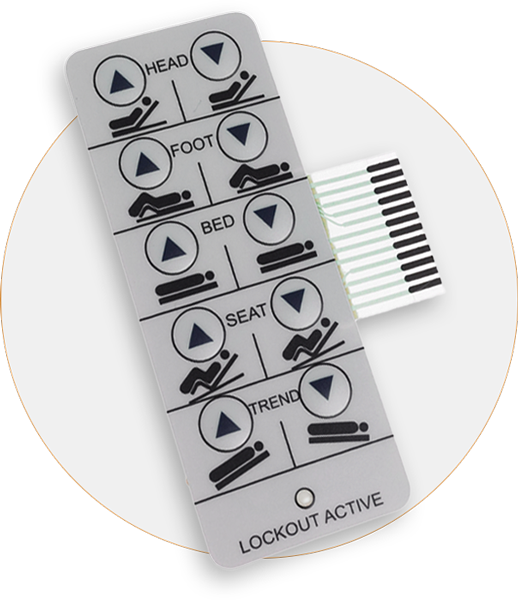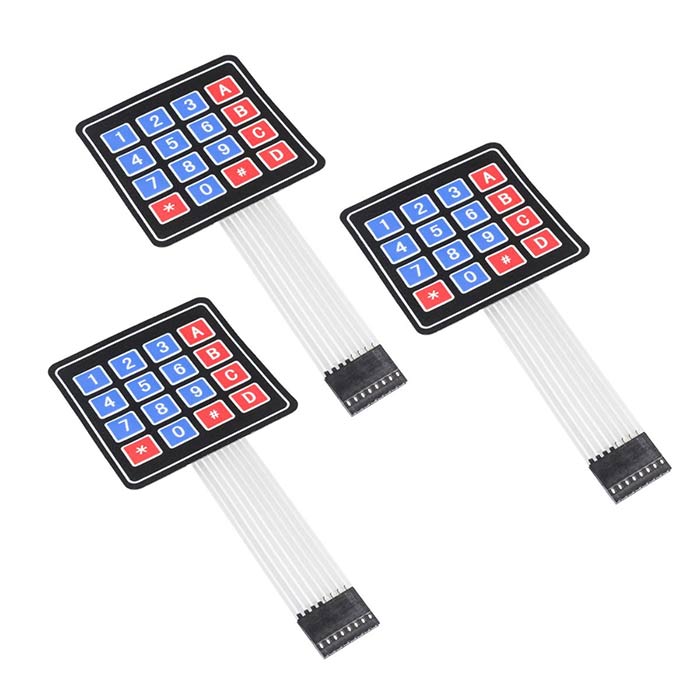Don’t miss the value of working with a proven membrane switch manufacturer for mock-ups.
All About Membrane Layer Change: Recognizing Its Layout and Functionality
When you think of the control user interfaces in modern gadgets, membrane layer buttons commonly come to mind. These elements are extra than just buttons; they mix design and performance effortlessly. Recognizing just how they work and what makes them efficient can alter your viewpoint on daily electronics. However, there are nuances to their design and performance that you could not recognize. Let's explore what sets membrane switches over apart from other control systems.
What Are Membrane Layer Buttons?

Membrane switches can likewise be customized regarding form, dimension, and graphics, enabling suppliers to develop distinct interfaces customized to specific items. Overall, membrane layer switches play a substantial duty in boosting individual experience across a broad selection of applications.
Just How Membrane Switches Job
When you press a secret on a membrane switch, it turns on a straightforward yet reliable device. membrane switch manufacturer. The top layer, usually made of adaptable material, pushes down onto a conductive layer below it.
You'll observe that the tactile feedback differs based upon the button layout, using either a soft click or a much more noticable action. As soon as you launch the secret, the membrane layer go back to its initial setting, reopening the circuit and stopping the signal. This process takes place almost instantly, ensuring a receptive individual experience.
Membrane layer buttons are preferred as a result of their longevity and resistance to dirt and moisture, making them optimal for different applications, from family devices to medical devices. Understanding this operation assists you appreciate their prevalent usage.
Key Components of Membrane Buttons
Comprehending the vital parts of membrane layer buttons is essential for comprehending their performance and design. At the core, you'll discover the graphic overlay, which supplies the visual interface for customers. Beneath that, there's a spacer layer that separates the circuit layers, guaranteeing that they do not make call until pushed. The circuit layer is where the magic takes place; it consists of conductive traces that complete the circuit when you press the button. An additional important component is the sticky backing, permitting the switch to abide by surfaces firmly. The safety layer shields against environmental aspects and wear, prolonging the switch's lifespan. Each part plays a substantial role in making certain reliable efficiency and user communication. By comprehending these parts, you'll acquire understanding right into how membrane layer switches over operate and their relevance in different applications.
Products Made Use Of in Membrane Layer Switch Design
The efficiency and longevity of membrane layer switches heavily depend upon the products utilized in their layout. You commonly come across polyester and polycarbonate as primary substrates due to their excellent strength and versatility. These materials resist scrapes and chemicals, making them perfect for requiring settings.
The conductive layers typically make use of silver or carbon, chosen for their reliability and conductivity. membrane switch manufacturer. Silver supplies superior performance, while carbon is a cost-efficient choice. For the overlay, you may think about a matte or glossy finish, relying on your visual demands and customer experience
Adhesives play an important duty also; they bond layers firmly and guarantee long life. Make sure to select adhesives that stand up to environmental elements like temperature and moisture. Ultimately, do not ignore the value of a great printing method for graphics, as it improves both capability and visual charm. Choosing the best products will assure your membrane layer button stands the examination of time.
Design Factors To Consider for Membrane Switches
While creating membrane click to read more layer buttons, it's important to take into account different elements that affect their performance and individual experience. Start by concentrating on the format and switch size; make certain they're intuitive and easy to browse.
Do not ignore the visuals layout; clear labeling and shade comparison are considerable for visibility. Verify your design fits environmental elements, like wetness or temperature variations, which can affect performance. Ultimately, remember the importance of testing models with real users to gather responses and make needed adjustments. This iterative procedure aids you improve the layout, confirming it meets both practical and aesthetic needs efficiently. By carefully taking into consideration these components, you'll produce a membrane switch that enhances use and contentment.
Applications of Membrane Layer Buttons
Membrane layer buttons are flexible parts found in numerous applications, from industrial tools to customer electronic devices. You'll see their influence in devices that require durable user interfaces and in devices that profit from streamlined layouts. Understanding these applications helps you appreciate the performance and usefulness of membrane switches in everyday modern technology.
Industrial Tools Usage
When you're wanting to enhance the functionality of commercial equipment, membrane layer switches provide a reputable solution that incorporates sturdiness with user-friendly style. These buttons are excellent for extreme atmospheres, supplying resistance to dust, wetness, and chemicals. You'll locate them in control panels for making makers, HVAC systems, and medical gadgets, where precision and responsiveness are vital. Their reduced account implies they fit perfectly into various tools, conserving beneficial space while keeping convenience of use. With personalized graphics and backlighting alternatives, you can develop an intuitive interface for operators, improving efficiency and security. And also, their lengthy life expectancy lowers upkeep prices, making them a smart financial investment for your industrial applications. Welcome membrane layer buttons to simplify your procedures and improve total performance.
Consumer Electronic Devices Combination
In the domain name of customer electronics, membrane buttons play a necessary function in boosting customer her explanation interaction and tool performance. Membrane layer switches likewise ensure resilience and resistance to dust and moisture, extending the life expectancy of your electronic devices. By picking membrane layer buttons, you improve not just the functionality but also the design of your why not try here tools, making everyday communications smooth and enjoyable.
Advantages and Drawbacks of Membrane Layer Buttons
While membrane layer switches provide a variety of benefits, they additionally come with some downsides that you must take into consideration. One significant benefit is their small design, making them ideal for space-constrained applications. They're also cost-effective, providing a durable solution with a low production expense. In enhancement, their smooth surface area is simple to clean, improving hygiene in environments like hospitals.

Nonetheless, there are disadvantages. Membrane switches can have a much shorter life-span compared to mechanical switches, especially under heavy usage. They can additionally be much less responsive, which could influence user comments during procedure. Moreover, if harmed, fixing them can be challenging and often needs complete replacement. Eventually, their sensitivity to severe temperatures and ecological conditions may restrict their efficiency in certain setups. Balancing these benefits and drawbacks will aid you figure out if membrane buttons are the ideal fit for your job.
Often Asked Questions
The Length Of Time Do Membrane Layer Switches Over Normally Last?
Membrane switches typically last in between 5 to ten years, relying on usage and environmental problems. You'll desire to assess factors like wear, exposure to wetness, and temperature level fluctuations to determine their long life effectively.
Can Membrane Changes Be Customized for Specific Styles?
Yes, you can customize membrane switches to fit specific designs (membrane switch manufacturer). You'll have the liberty to select colors, shapes, and formats that match your task's needs, ensuring they blend flawlessly with your overall visual
What Is the Expense Variety for Membrane Layer Switch Production?
The expense array for membrane button manufacturing commonly falls between $1 and $10 each, depending on aspects like layout intricacy, quantity, and materials. You can get quotes from manufacturers to find the ideal choice.

Are Membrane Changes Water-proof or Immune?
Membrane layer switches can be made to be water-proof or resistant, depending on products utilized and building and construction approaches. If you need them for wet settings, guarantee you specify those requirements throughout the design procedure.
Exactly How Do Membrane Layer Switches Over Compare to Conventional Switches?
Membrane switches are usually thinner and a lot more flexible than typical switches, providing a streamlined layout. They're often much easier to cleanse and integrate, but may not offer the tactile responses you're used to with mechanical options.
Verdict
